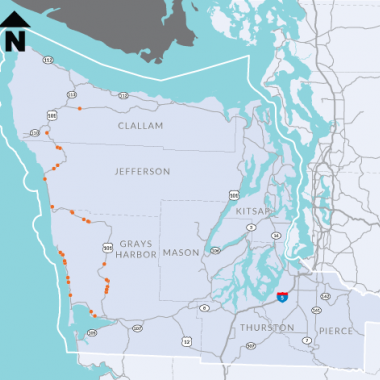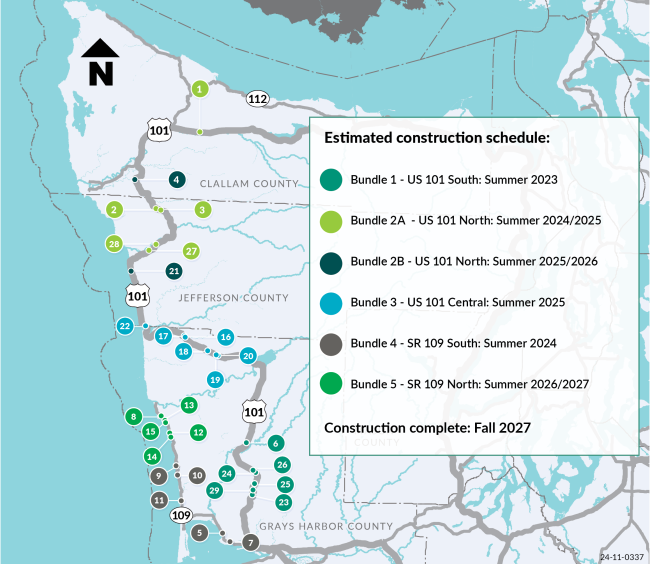Project overview
This project will correct 29 identified streams and culverts that cross under US 101 and SR 109 in Grays Harbor, Jefferson and Clallam Counties. The culverts under the highways do not allow fish to access vital habitat.
Once complete, this project will restore nearly 37 miles of potential habitat across the Olympic Peninsula.
What to expect
Current projects
- US 101 in Jefferson and Clallam Counties 2024 - 2025
- US 101 in Jefferson and Clallam Counties 2025 - 2026
- US 101 on Quinault Indian Nation
Upcoming projects
This project corrects 29 fish barriers under US 101 and SR 109 in Grays Harbor, Jefferson and Clallam Counties. Once complete, work will provide access to upstream habitat for salmon and other resident species.
Fish barrier removal program overview
A fish passage barrier is anything that hinders fish from moving upstream or downstream. Culverts, large pipes under roadways, allow water to flow but may not allow fish to swim through. Culverts may block fish migration because the water flow is too swift, too shallow, or has a waterfall into or out of the culvert.
We correct fish barriers on state highways to help salmon recovery and comply with state laws. Since we created a dedicated fish passage program in 1991, we have corrected hundreds of barriers that have restored access to over one thousand miles of fish habitat. In addition to our ongoing work to correct statewide barriers, a 2013 federal court injunction requires the state to correct barrier culverts to salmon and steelhead within the injunction area in western Washington.
Opening habitat allows more salmon and steelhead at all life stages (including juveniles who aren’t yet strong swimmers like adults) to access important spawning and rearing habitat, including areas that have been inaccessible for years. Installing structures like bridges and culverts that allow for natural stream processes help protect and restore salmon runs, ultimately benefiting both the Pacific Northwest landscape and economy.


